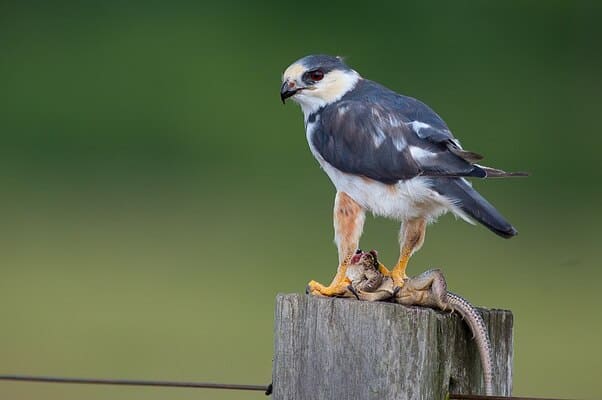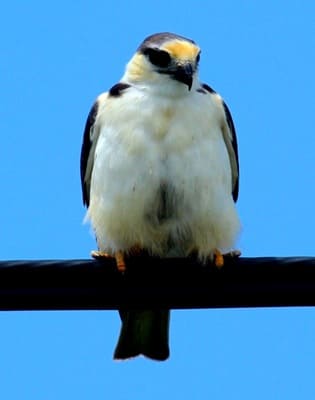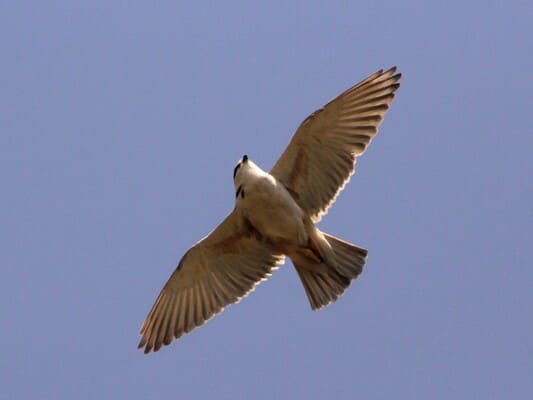Pearl Kite Bird Details
Gampsonyx swainsonii
Pearl Kite
Pearl Kite
Nicholas Aylward Vigors in 1825
Accipitriformes (HAWKS, EAGLES and KITES)
Accipitridae
Gampsonyx
- Mexico,
- Central America (such as Guatemala, Honduras),
- South American countries (like Colombia, Ecuador, Brazil, Argentina).
Appearance :
Small raptor with a distinctive black and white plumage, red eyes, and a long, square-tipped tail.
Behaviour :
Agile flyer, often seen perched on exposed branches or wires, hunting small vertebrates and large insects.
Habitat :
Open woodlands, savannas, forest edges, and riverbanks with scattered trees.
Diet :
Feeds primarily on insects (especially grasshoppers) and small vertebrates like lizards, frogs, and small birds.
Conservation Status :
Least Concern
Distribution :
Found in Central and South America, from Mexico to northern Argentina.
Population Size :
Not precisely quantified
Life Span :
8-10 years in the wild.
Body And Tarsus:
Small and slender raptor with a distinctive appearance.
Head And Bill :
Small head with a hooked bill typical of raptors.
Length :
Approximately 23-25 cm (9-10 inches).
Neck :
Long and slender.
Size :
Small
Tail Details :
Long, with a rounded tip.
Weight :
Around 85 grams (3 ounces).
Wing :
Relatively short wings.
Wing Span :
Approximately 47-55 cm (18.5-21.5 inches).
Facial Feature :
Large, expressive eyes; relatively small facial disk for a raptor.
Nest Details :
- Small, often placed in the fork of a tree, palm fronds, or man-made structures.
- Nest Made Up of Usually sticks and twigs.
Breeding Season :
September to April
Nesting Season :
September to April
Egg Color :
Whitish to pale blue-green.
Egg Length :
Around 30 mm.
Egg Width and Weight :
Approximately 23 mm.
Clutch Size :
Typically 2-3 eggs.
No. of Broods :
One brood per breeding season.
Incubation Period :
26-28 days
Nestling Period :
Fledging occurs around 30 days after hatching.
Vocalization :
High-pitched, repetitive whistles and squeaks.
Sex Demorphism :
Females are slightly larger than males but have similar plumage.
Migration Details :
Non-migratory
Explore More Birds Of Same Genus
No birds of same genus found




